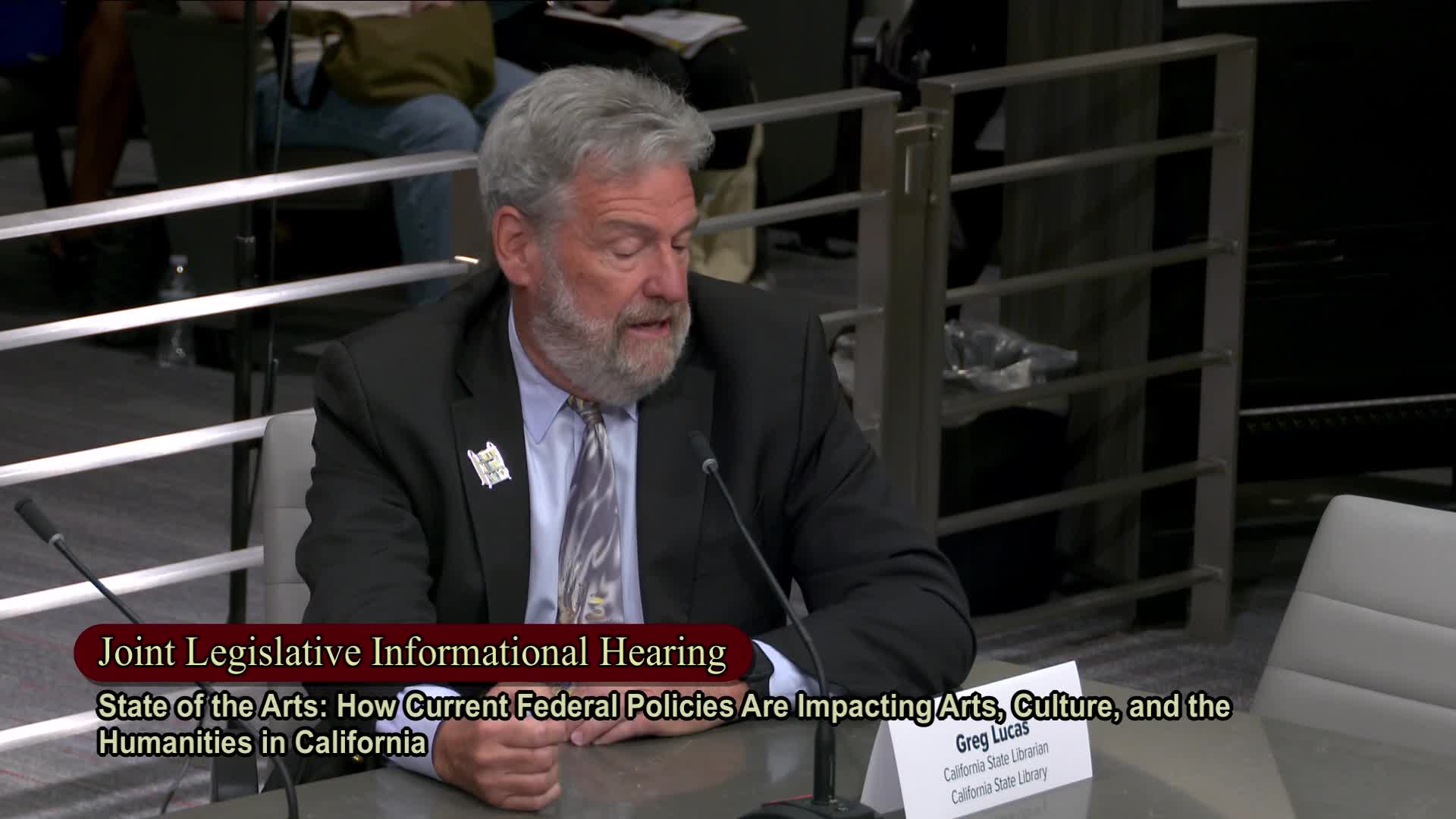California Arts Council Director discusses funding challenges and federal budget proposals
May 14, 2025 | California State Assembly, House, Legislative, California
This article was created by AI summarizing key points discussed. AI makes mistakes, so for full details and context, please refer to the video of the full meeting. Please report any errors so we can fix them. Report an error »

California's arts community is facing significant challenges as budget deficits loom and federal funding uncertainties arise. During a recent joint hearing of the California State Assembly's Joint Committee on Arts and the Assembly Arts, Entertainment, Sports, and Tourism Committee, key stakeholders discussed the current fiscal landscape and its implications for the arts sector.
The California Arts Council (CAC), represented by Director Danielle Purcell, highlighted the agency's critical role as the state's primary arts funder. With a budget shortfall of $3.4 million this year and a projected loss of $15 million in federal funds for the next fiscal year, the CAC is navigating a precarious financial situation. Purcell emphasized the importance of accessing federal funds to support local arts initiatives, noting that while some funding has been restored, it is insufficient to maintain previous levels of local assistance.
The hearing also addressed the potential elimination of the National Endowment for the Arts (NEA) and other federal cultural institutions, as proposed in the White House's budget for fiscal year 2026. This move could have devastating effects on California's arts ecosystem, particularly for rural and low-income communities that rely heavily on state funding. Purcell warned that disruptions to NEA grants would exacerbate existing inequalities in arts access and funding.
In response to these challenges, the CAC is conducting a damage assessment to understand the impact of terminated grants and is actively communicating with stakeholders to address their concerns. The agency is also preparing a creative economy plan aimed at ensuring that California's cultural organizations have the necessary resources to thrive, even in the face of potential federal funding cuts.
As cities across California grapple with their own budget deficits, the need for robust state-level support for the arts has never been more critical. The discussions at this hearing underscore the vital role that arts funding plays in fostering community well-being and economic vitality. Moving forward, stakeholders are urged to collaborate and advocate for sustainable solutions that will protect and enhance California's rich cultural landscape.
The California Arts Council (CAC), represented by Director Danielle Purcell, highlighted the agency's critical role as the state's primary arts funder. With a budget shortfall of $3.4 million this year and a projected loss of $15 million in federal funds for the next fiscal year, the CAC is navigating a precarious financial situation. Purcell emphasized the importance of accessing federal funds to support local arts initiatives, noting that while some funding has been restored, it is insufficient to maintain previous levels of local assistance.
The hearing also addressed the potential elimination of the National Endowment for the Arts (NEA) and other federal cultural institutions, as proposed in the White House's budget for fiscal year 2026. This move could have devastating effects on California's arts ecosystem, particularly for rural and low-income communities that rely heavily on state funding. Purcell warned that disruptions to NEA grants would exacerbate existing inequalities in arts access and funding.
In response to these challenges, the CAC is conducting a damage assessment to understand the impact of terminated grants and is actively communicating with stakeholders to address their concerns. The agency is also preparing a creative economy plan aimed at ensuring that California's cultural organizations have the necessary resources to thrive, even in the face of potential federal funding cuts.
As cities across California grapple with their own budget deficits, the need for robust state-level support for the arts has never been more critical. The discussions at this hearing underscore the vital role that arts funding plays in fostering community well-being and economic vitality. Moving forward, stakeholders are urged to collaborate and advocate for sustainable solutions that will protect and enhance California's rich cultural landscape.
View full meeting
This article is based on a recent meeting—watch the full video and explore the complete transcript for deeper insights into the discussion.
View full meeting
